Rank Species | Genus Saponaria Higher classification Saponaria | |
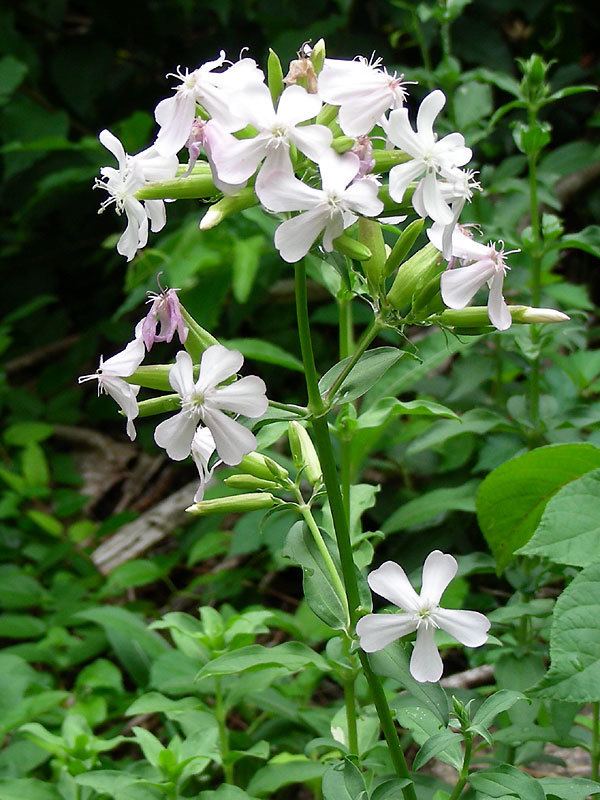 | ||
Similar Saponaria, Saponaria ocymoides, Elecampane, Quillaja saponaria, Caryophyllaceae | ||
Common soapwort saponaria officinalis 2012 09 02
Saponaria officinalis is a common perennial plant from the carnation family (Caryophyllaceae). This plant has many common names, including common soapwort, bouncing-bet, crow soap, wild sweet William, and soapweed. There are about 20 species of soapworts altogether.
Contents

The scientific name Saponaria is derived from the Latin sapo (stem sapon-) meaning "soap," which, like its common name, refers to its utility in cleaning. From this same Latin word is derived the name of the toxic substance saponin, contained in the roots at levels up to 20 percent when the plant is flowering (Indian soapnuts contain only 15 percent). It produces a lather when in contact with water. The epithet officinalis indicates its medicinal functions.
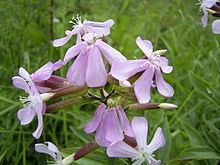
Saponaria officinalis' native range extends throughout Europe, and in Asia to western Siberia. It grows in cool places at low or moderate elevations under hedgerows and along the shoulders of roadways.
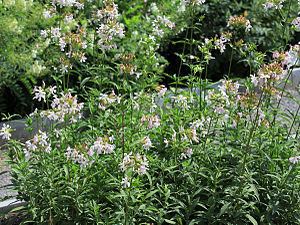
Description
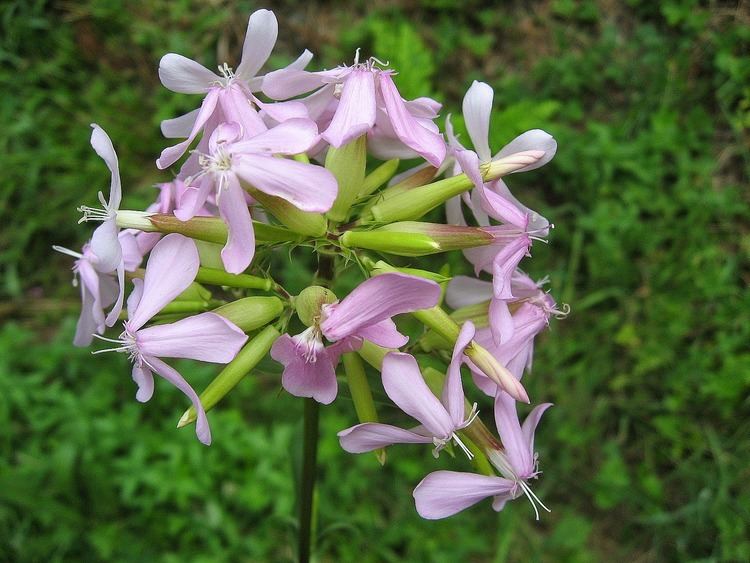
The plants possesses leafy, unbranched stems (often tinged with red). It grows in patches, attaining a height of 70 cm. The broad, lanceolate, sessile leaves are opposite and between 4 and 12 cm long. Its sweetly scented flowers are radially symmetrical and pink, or sometimes white. Each of the five flat petals have two small scales in the throat of the corolla. They are about 2.5 cm wide. They are arranged in dense, terminal clusters on the main stem and its branches. The long tubular calyx has five pointed red teeth.
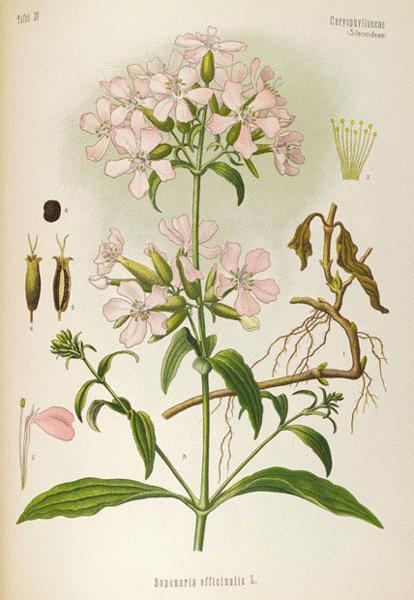
The individual flowers open in the evening, and stay open for about three days. They produce a stronger scent at night and supplement nectar production during the night. The flowers are protandrous: on the second night of blooming, the pollen is released, and the stigma develops to its final position by the third night. Much of the seed production comes from self-pollination. The flowers are visited by various insects including Noctuidae, Sphingidae, bumblebees, and hoverflies.

In the northern hemisphere Saponaria officinalis blooms from May to September, and in the southern hemisphere October to March.
Internal use
An overdose can cause nausea, diarrhoea and vomiting.
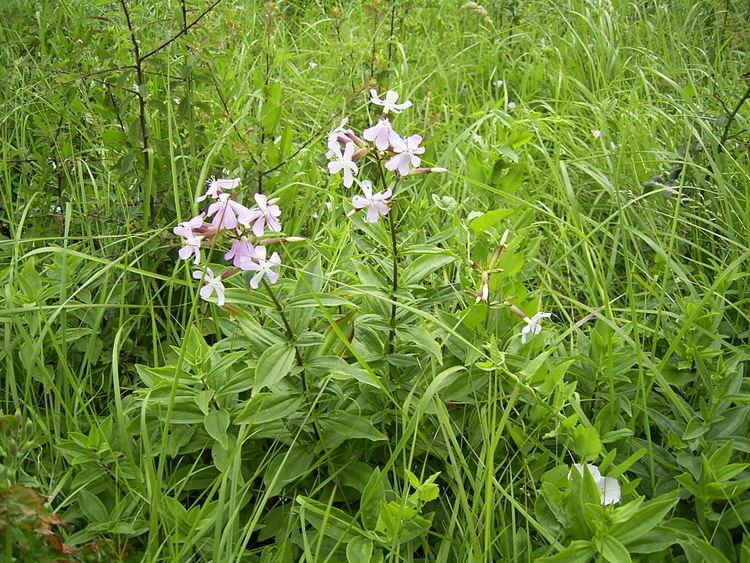
Despite its toxic potential, Saponaria officinalis finds culinary use as an emulsifier in the commercial preparation of tahini halva, and in brewing to create beer with a good "head". In India, the rhizome is used as a galactagogue.
In the Middle East, the root is often used as an additive in the process of making the popular sweet, halvah. The plant is called ‘irq al-ḥalāwah in Arabic, çöven in Turkish, and is utilized to stabilize the oils in the mixture or to create a distinctive texture of halvah.
Chemistry
S. officinalis contains the flavone saponarin.
